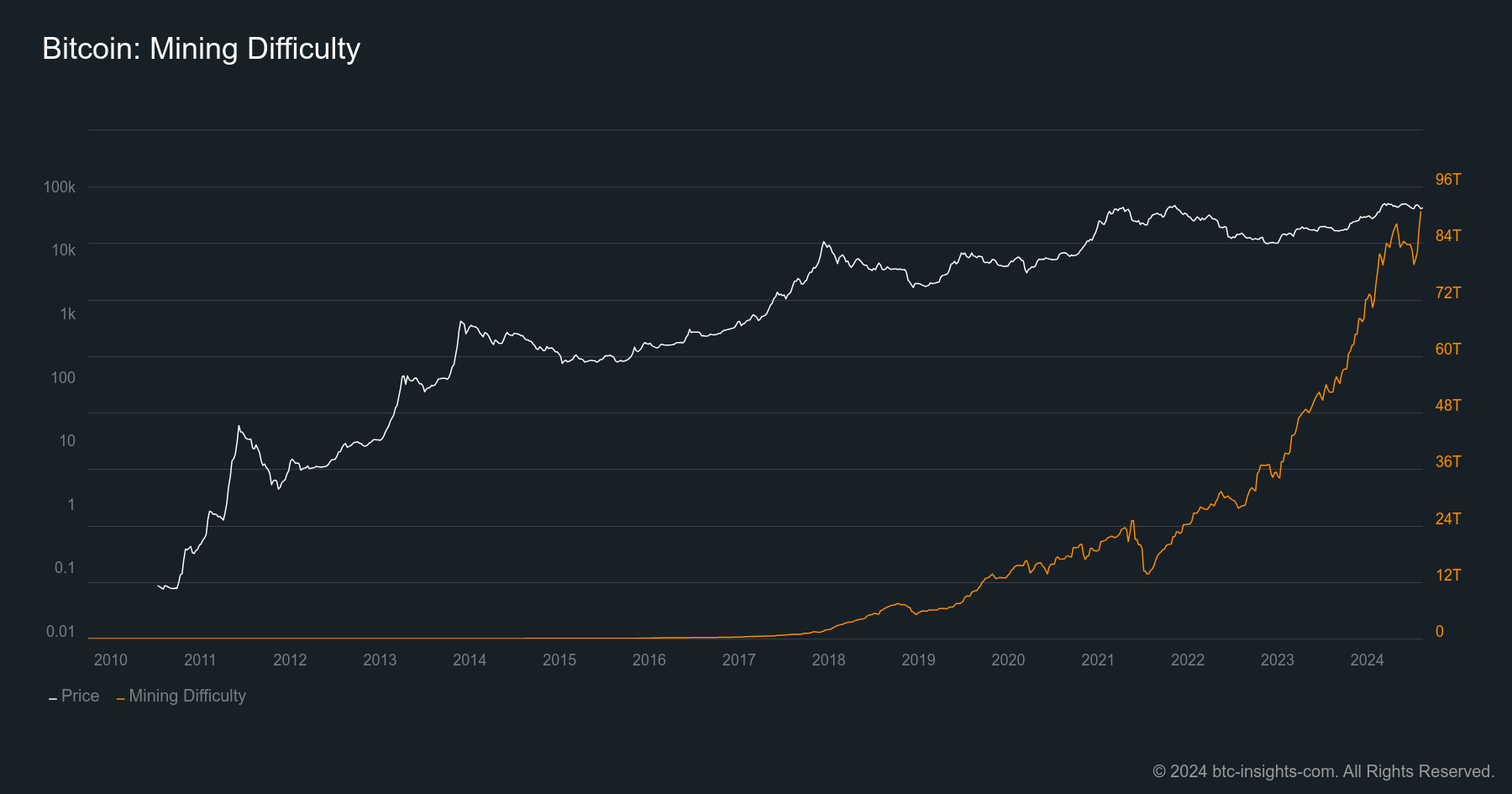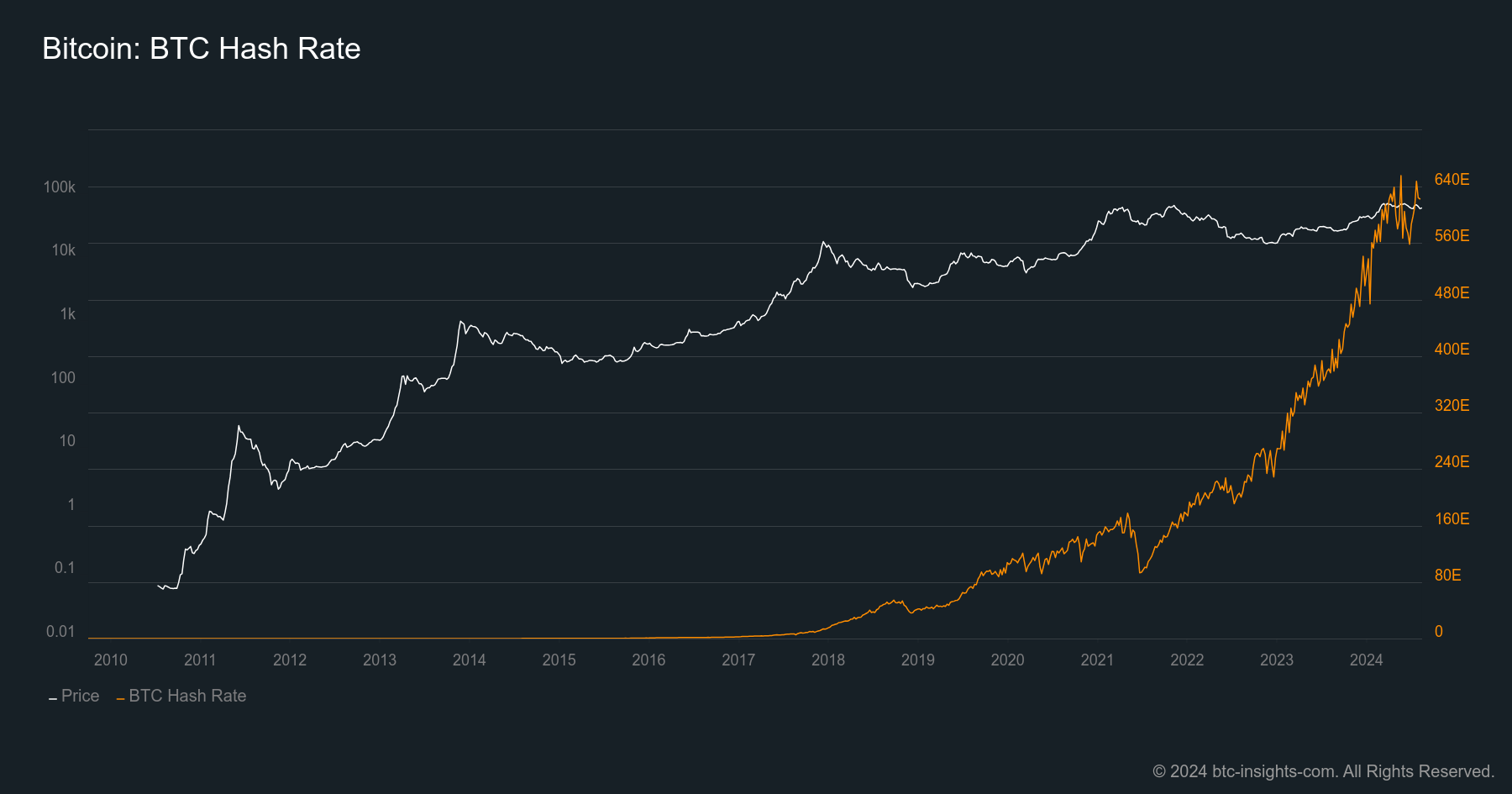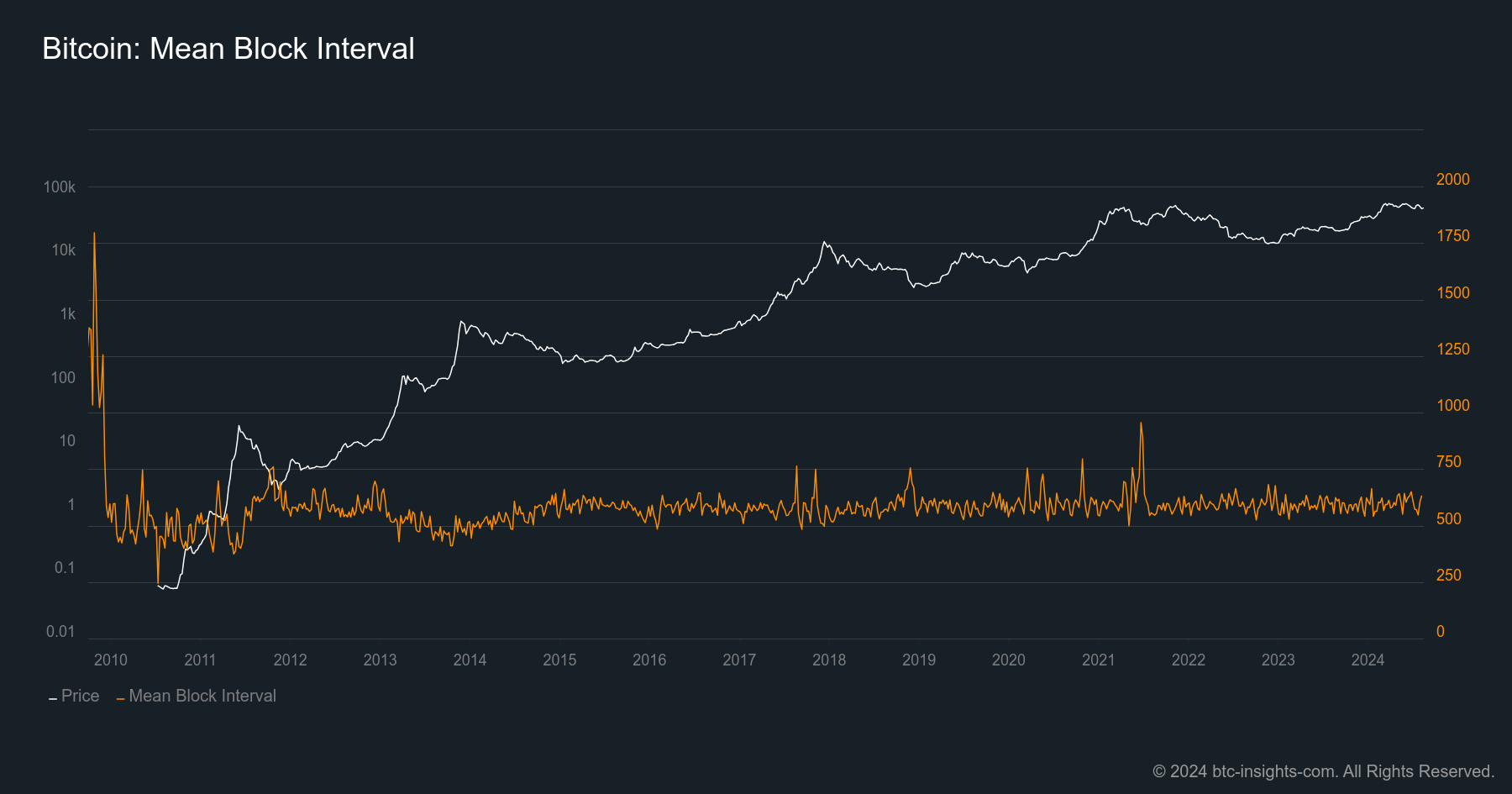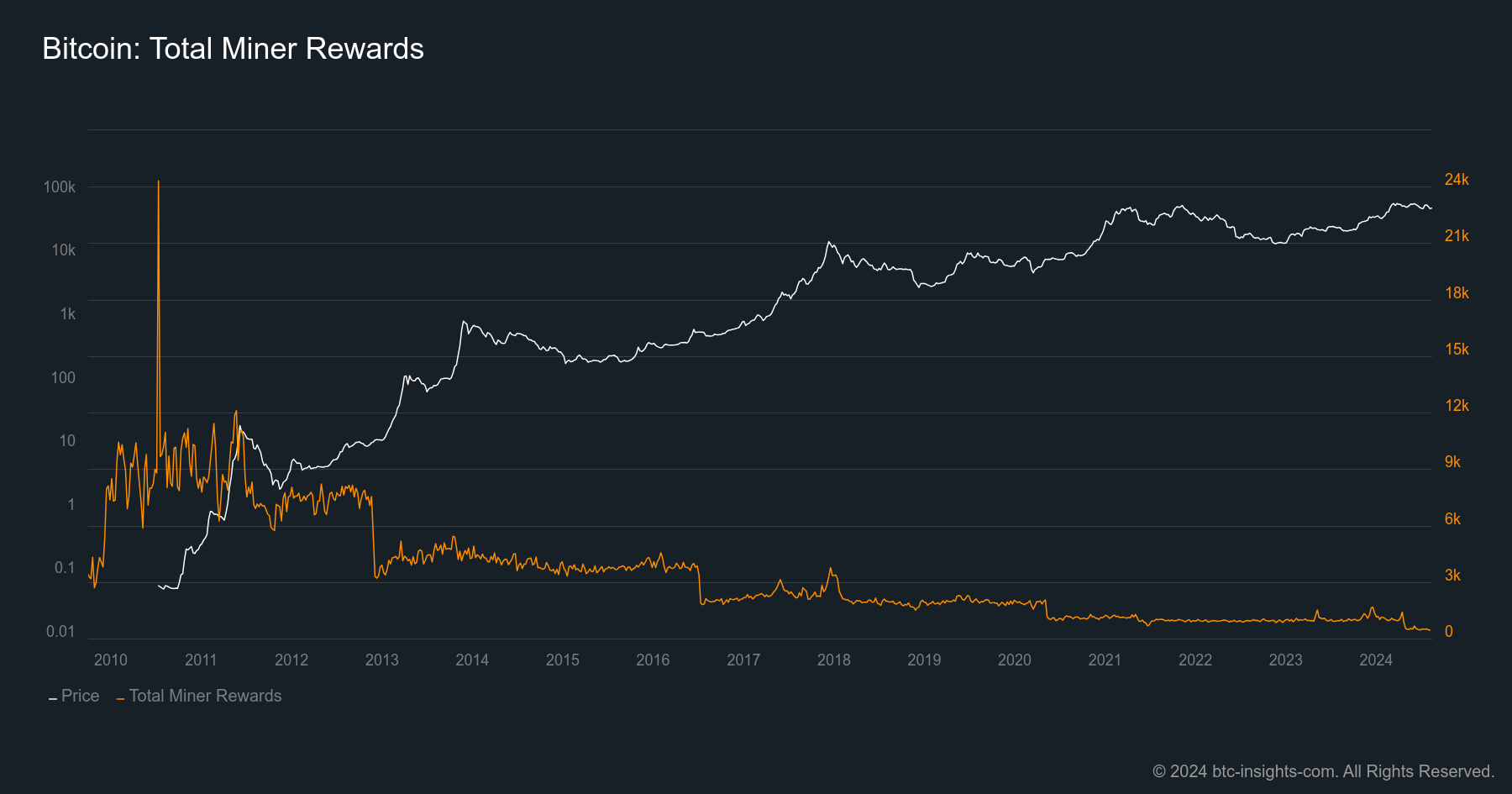
How Proof of Work Mining Works: Bitcoin's Key Metrics Every Investor Should Know
What is Proof of Work Mining?
Proof of Work is a consensus mechanism used by Bitcoin and other Cryptocurrencies to validate transactions and secure the network. Miners compete to solve complex mathematical puzzles, which are explained in more detail below. The first to solve the problem adds a new block to the blockchain and receives a reward. This process requires significant computing power to ensure that the network remains secure and decentralized.
What Mathematical Problems are Solved to Mine Bitcoin?
To mine a new block in the Bitcoin blockchain, a miner must change a part of the block called the nonce. The nonce is used together with the block header and hashed using a SHA256 hash function. The hashed output must be sufficiently small. If this is the case, the new block is valid and is added to the blockchain. What is “sufficiently small” is defined by the Bitcoin difficulty.
Blockchain Difficulty: What It Is and Why It Matters

Difficulty Explained
Blockchain difficulty is a metric that measures how hard it is to mine a new block. Bitcoin's difficulty is adjusted every 2016 blocks. This is the number of blocks that should be mined within a period of two weeks. If it has taken longer, the difficulty decreases, if it has taken shorter, the difficulty increases to maintain a consistent block interval of 10 minutes per block. The more miners join the network and the higher the total computing power (hashrate) increases, the difficulty rises. This self-adjusting mechanism keeps the network stable and ensures that blocks are added at a steady rate.
The difficulty live chart can be seen here.
The Difficulty Ribbon: Understanding Miner Capitulation
The Difficulty Ribbon is a concept developed by the analyst Willy Woo to visualize the capitulation and expansion phases of miners. A ribbon consists of several simple moving averages that are compiled to compare the rate of change. As difficulty increases, weaker miners are generally forced to cease operations because they are unprofitable, leading to capitulation. Conversely, stagnant or decreasing difficulty is often a sign that only the most efficient miners are operating. These areas can be visualized as a compression or expansion of the ribbon. The difficulty ribbon can serve as a valuable indicator for investors, signaling potential buying opportunities when miners capitulate.
Hashrate: The Power Behind Bitcoin Mining

What is Hashrate?
Hashrate is the total computational power used by miners to solve the cryptographic puzzles in the Bitcoin network. It’s measured in hashes per second (H/s). A higher hashrate means more miners are participating in the network, making it more secure and robust. The hashrate is directly correlated with the difficulty level; as the hashrate increases, so does the difficulty.
The hashrate live chart can be seen here.
The Hashrate Ribbon: A Signal for Market Bottoms

Similar to the Difficulty Ribbon, the Hashrate Ribbon is a visual tool that shows the impact of miner participation on Bitcoin’s price. When the hashrate declines, it can indicate that miners are shutting down their operations, often due to unprofitability. This reduction in hashrate, followed by a recovery, has historically marked the bottom of bear markets. Investors can use this ribbon as a signal to identify potentially undervalued market conditions.
The hashrate ribbon live chart can be seen here, a metric directly accessing the ribbon compression is visualized here.
Block Interval: The Pulse of the Blockchain

Maintaining a Steady Rhythm
The block interval refers to the average time it takes to mine a new block. For Bitcoin, this interval is designed to be around 10 minutes. However, this can vary depending on the hashrate and difficulty. When the hashrate increases, blocks are mined faster, which can lead to a temporary decrease in the block interval. Conversely, when the hashrate decreases, blocks take longer to mine.
The mean block interval can be tracked here.
Miner Revenue and Income: The Driving Power of Mining Operations
Miner Revenue: Block Rewards and Transaction Fees

Miner revenue is generated from two primary sources: block rewards and transaction fees. The block reward is the amount of Bitcoin awarded to the miner who successfully adds a block to the blockchain. Initially, this reward was 50 BTC per block, but it halves approximately every four years (a process known as the halving). The current reward is 3.125 BTC per block as of 2024. Transaction fees are the additional income miners earn from processing transactions included in each block.
A live chart is accessable here.
Miner Income: Navigating Market Volatility
While miner revenue refers to the total earnings, miner income takes into account the operational costs, such as electricity and hardware maintenance. Mining can be a profitable venture, but it’s also subject to significant volatility. When Bitcoin’s price is high, miners can generate substantial income. However, during bear markets, the reduced price can make mining unprofitable, leading to miner capitulation.
Additional Insights: The Importance of On-Chain Data
On-Chain Metrics: A Deeper Look
On-chain data provides a wealth of information about the Bitcoin network. Based on the basic blockchain metrics as describes above, other metrics are derived, e. g. the number of active addresses, transaction volume, and the age of UTXOs (Unspent Transaction Outputs) that offer insights into network activity and the behavior of Bitcoin holders. For instance, a high number of active addresses can indicate increased adoption or interest in Bitcoin, while the age of UTXOs can signal whether coins are being held or moved.
See this article for a beginner's guide on how to start with on-chain analysis.
Conclusion
Understanding Proof of Work mining and its basic metrics is crucial for anyone looking to navigate the world of Bitcoin and blockchain technology. From difficulty and hashrate to miner revenue, these indicators offer valuable insights into the health and trends of the network. By integrating these insights into your analysis, you’ll be better equipped to understand the forces driving the Bitcoin market and the underlying technology that powers it.
Author's Disclaimer: This article has been written for informational purposes only. It shall not be seen as financial advice in any shape or form.
